#8th century BC
Photo

The Phoenician world, 8th century BC.
by LegendesCarto
99 notes
·
View notes
Text
Science, Religion Mixing? Or No?
Science vs Religion? Science with Religion? Science without Religion? Religion without Science? Or simply a cuddle muddle of numerous variations?
View On WordPress
#1915#1919#20 July 1969#4 October 1957#6th century#7th century BC#8th century BC#Abbasid Caliphate#Abbasids#Africa#Albert Einstein#Albertus Magnus#Apollo Lunar Module#Arthur Eddington#Astrology#Babylonians#Baghdad#Catholic#Catholic Church#China#Chinese#Christianity#Copernicus#Descartes#Eagle#Early Modern Period#Galileo#Geo-Heliocentric#Gersonides#Greek
1 note
·
View note
Text
Dama de Galera (MAN)
Dama de Galera. MAN.
Está hecha de alabastro y pertenece a la cultura íbera, de finales de siglo V aC. Fue encontrada en la necrópolis de Tutugi, zona I, sepultura 20, en Galera, provincia de Galera (España). Se trata de un ejemplo de la producción fenicia en el área de principios del siglo VIII adC.
Continue reading Dama de Galera (MAN)

View On WordPress
#Cultura íbera#Dama de Galera#En Español#Escultura#España#Granada#Madrid#Museo Arqueológico Nacional (Madrid)#Necrópolis de Tútugi#Siglo VIII adC#Iberian Culture#Sculpture#Spain#8th century BC
0 notes
Text
when you're being mean to me this is who you're being mean to. btw
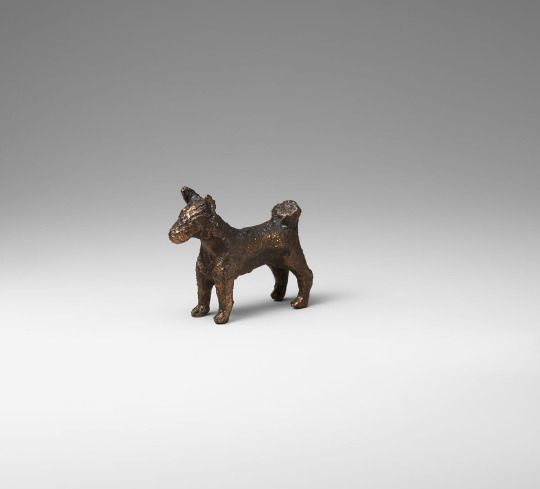
#tagamemnon#i am in fact bronze assyrian dog figurine ca. 9th-8th century bc#queueusque tandem abutere catilina patientia nostra
326 notes
·
View notes
Text
Demodocus, my beloved…
#the odyssey#odyssey#homer#demodocus#blind bard#blindness#divine wisdom#insight#gift from the gods#blind/vi people deserve to have ultimate power#and ultimate glory#kleos! kleos!#Homer: blind representation since the 8th-7th Centuries BC#classical antiquity really had it all#homer’s iconic blind self-inserts#things that only vips will understand
4 notes
·
View notes
Text

Steve knew he’d fight a god before he let them take you.
“I love you,” Steve whispered and his voice cracked on each word. Tears from his eyes streak the dirt on his face, running rivers down your cheek until they mixed with your own. “I’ll find you again. In the next life, and the next again. I prom—”
THE PLAYLIST
THE TIMELINE
I. ATHENS, GREECE: 8TH CENTURY BC
II. ROME, ITALY: 49 BC
III. LONG ISLAND, NEW YORK: 1922
IV. MOUNTAIN LAKE, VIRGINA: 1963
V. HAWKINS, INDIANA: 1988
VI. AMSTERDAM, NETHERLANDS: 1996
VII. EDINBURGH, SCOTLAND: 2008
VIII. THE PRESENT DAY

1K notes
·
View notes
Text
never forget on like. my third to last day of school when i got in a huge argument with this guy bc he said there was no good music made before 2015
#i mean first of all. ive heard people say there was no good music AFTER x year. but BEFORE?????#we were playing uno he asked what i was listening to etc etc and he ended up asking my favorite song and i said beneath the brine#and he looked it up and was like this is from 2014???!!! THATS SO OLD#which BAFFLED me even more than when my friend in 8th grade called 2000s music really old#like ok my standards are warped bc i was into classical music as a kid. so really old is a term of centuries for me#but like. in what world is 2014 old...#i shudder to think of what he would have said if id told him abt another new world instead (2010 or 2012 depending on the version)#talkin
0 notes
Text

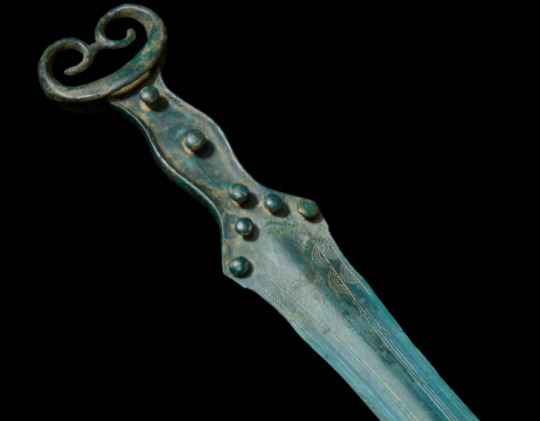
Bronze sword, Europe, 10th-8th century BC
from Christies
628 notes
·
View notes
Text
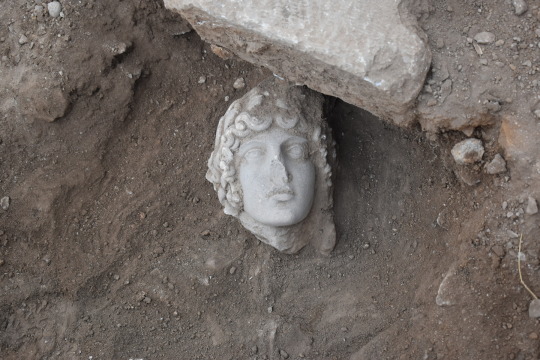
The Marble Head of Apollo Unearthed in Greece
The excavation, carried out by a group of students of the Aristotle University of Thessaloniki in the archaeological site of Philippi Kavala, brought to light important findings. Among other things, they discovered a rare head of Apollo dating back to the 2nd or early 3rd century AD.
The statue dates back to the 2nd or early 3rd century AD and it probably adorned an ancient fountain.
Natalia Poulos, Professor of Byzantine Archaeology, led the excavation, which included fifteen students from the Aristotle University of Thessaloniki (11 undergraduates, 2 master’s, and 2 PhD candidates), Assistant Docent Anastasios Tantsis, and Professor Emeritus of Byzantine Archaeology Aristotle Mendzo.
Archaeologists say, this year the excavation continued east of the southern main road (decumanus) at the point where it meets the northern axis of the city (the so-called “Egnatia”). The continuation of the marble-paved road was revealed, on the surface of which a coin (bronze phyllis) of the emperor Leo VI (886-912) was found, which helps to determine the duration of the road’s use. At the point where the two streets converge, a widening (square) seems to have been formed, dominated by a richly decorated building.
Archaeologists say evidence from last year’s excavations leads them to assume it was a fountain. The findings of this year’s research confirm this view and help them better understand its shape and function.

The research of 2022 brought to light part of the rich decoration of the fountain with the most impressive statue depicting Hercules as a boy with a young body.
The recent excavation (2023) revealed the head of another statue: it belongs to a figure of an ageneous man with a rich crown topped by a laurel leaf wreath. This beautiful head seems to belong to a statue of the god Apollo. Like the statue of Hercules, it dates from the 2nd or early 3rd century AD and probably adorned the fountain, which took its final form in the 8th to 9th centuries.
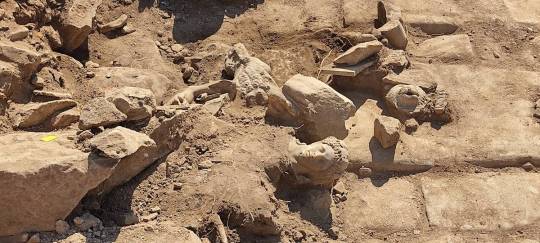
In classical Greek and Roman religion and mythology, Apollo is one of the Olympian gods. He is revered as a god of poetry, the Sun and light, healing and illness, music and dance, truth and prophecy, and archery, among other things.
Philip II, King of Macedon, founded the ancient city of Philippi in 356 BC on the site of the Thasian colony of Crenides near the Aegean Sea. The archaeological site was designated a UNESCO World Heritage Site in 2016 for its outstanding Roman architecture, urban layout as a smaller reflection of Rome itself, and significance in early Christianity.
By Oguz Buyukyildirim.
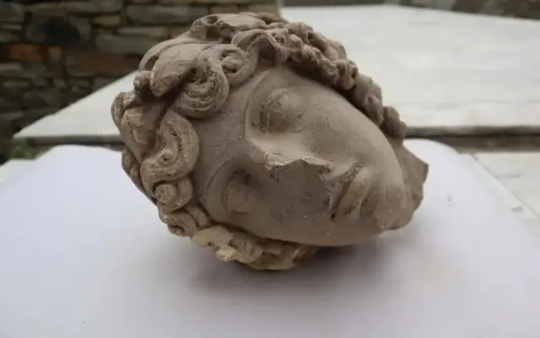
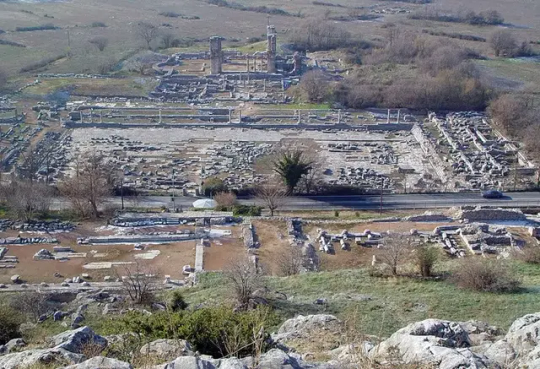
#The Marble Head of Apollo Unearthed in Greece#Philippi Kavala#marble#marble statue#ancient artifacts#archeology#archeolgst#history#history news#ancient history#ancient culture#ancient civilizations#ancient greece#greek history#greek art
195 notes
·
View notes
Text
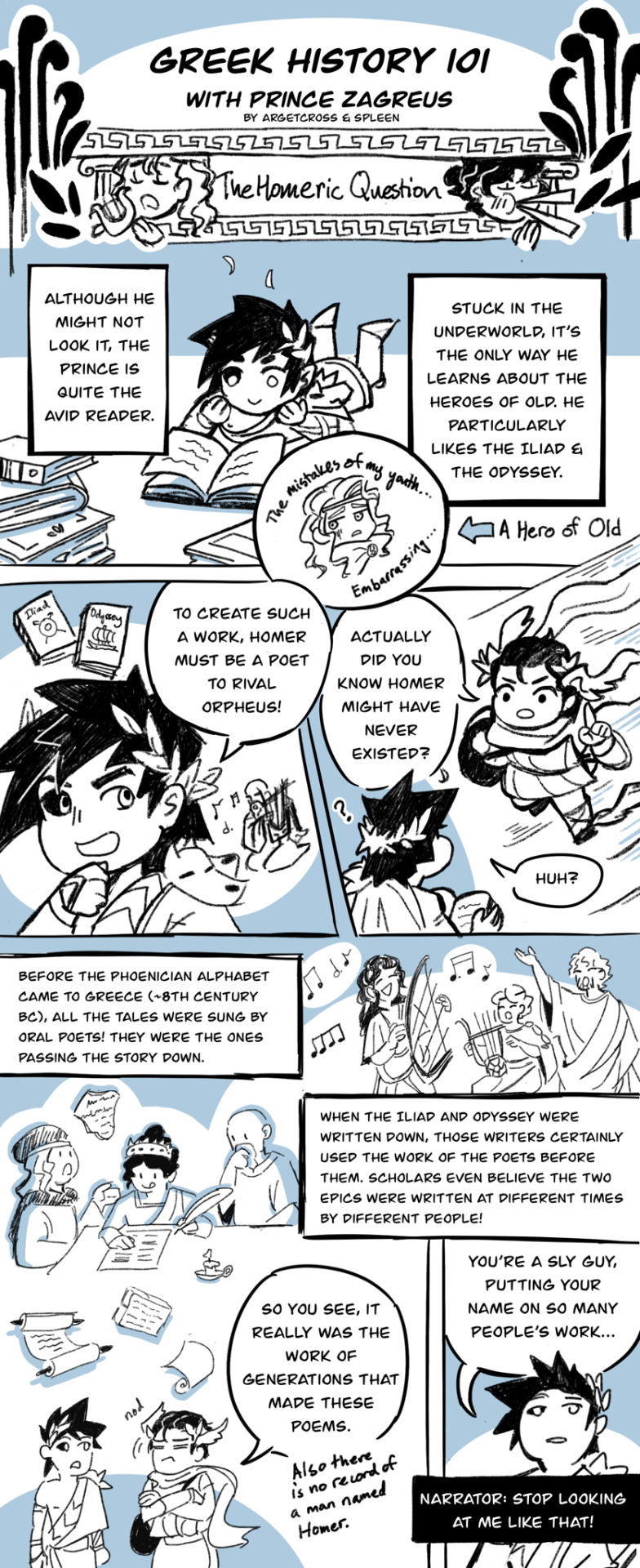
The Homeric Question feat. Prince Zagreus
For further reading, please check out Martin West's "The Homeric Question Today".
Additional caveats and comic text after the cut:
Additional Caveats:
Writing in Greece existed during the Bronze Age in the form of Linear B (and other systems such as Linear A on Minoan Crete), but after the subsequent collapse of Bronze Age civilization, the system disappeared from Greece.
The first mention of Homer as the author of both poems comes from comes from 520 BCE, a century or more after the poems were created. Prior to this, there was much debate even in ancient times as to the poems' origins, some citing different authors, others saying the creators were anonymous.
Comic Text:
Title: Greek History 101 with Prince Zagreus
Subtitle: The Homeric Question
Written and drawn by Argetcross. Colors by Spleen.
[Panel 1]
NARRATION: Although he might not look it, the Prince is quite the avid reader.
NARRATION: Stuck in the Underworld, it's the only way he learns about the heroes of old. He particularly likes the Iliad and the Odyssey.
TEXT AROUND ACHILLES: The mistakes of my youth.... Embarrassing (<- A Hero of Old)
[Panel 2]
ZAGREUS: To create such a work, Homer must be a poet to rival Orpheus!
[Panel 3]
HERMES: Actually did you know Homer might have never existed?
ZAGREUS: Huh?
[Panel 4]
NARRATION (HERMES): Before the Phoenician alphabet came to Greece (~8th century BC), all the tales were sung by oral poets! They were the ones passing the story down.
NARRATION (HERMES): When the Iliad and Odyssey were written down, those writers certainly used the work of the poets before them. Scholars even believe the two epics were written at different times by different people!
HERMES: So you see, it really was the work of generations that made these poems. (Also there is no record of a man named Homer.)
[Panel 5]
ZAGREUS: You're a sly guy, putting your name on so many people's work...
(IN-GAME) NARRATOR: Stop looking at me like that!
#hades game#homeric epics#zagreus#hermes#ancient greece#greek mythology#the homeric question#the iliad#the odyssey#my art#fan comic#ancient history#ancient greek literature#hello this came to me in a dream#i now inflict it upon you#please read the paper it's so funny and good
205 notes
·
View notes
Photo
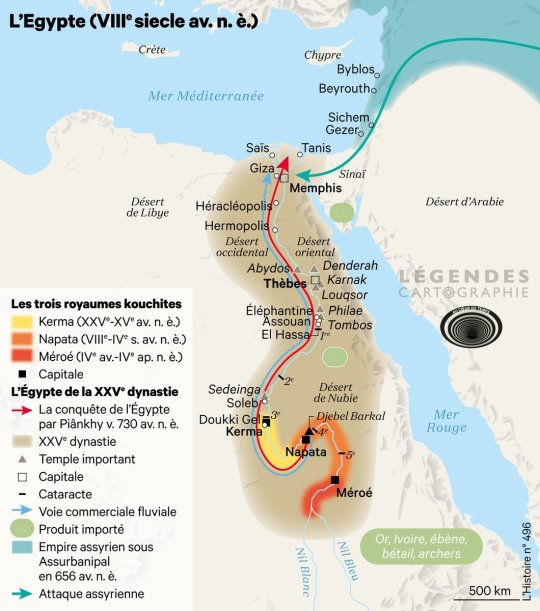
Egypt in the 8th century BC.
by LegendesCarto
65 notes
·
View notes
Text
Armenian Mythology - World History Encyclopedia
https://www.worldhistory.org/Armenian_Mythology/
View On WordPress
#8th century BC#Adad#Apocalypse#Aralezk#Armenia#Ars#Artamet#Assyria#Astghik#Baal#Babylonia#Bel#Beldi#Egypt#Egyptian Pantheon#Gusan#Haik#Haldi#Hayasa#Hayk#Hey People#Hurrian#Japheth#Mesopotamia#Mihr#Mithra#Mount Ararat#Movses Khorenatsi#Nineveh#Noah
0 notes
Text

~ Furniture plaque carved in relief with lion-headed figure.
Period: Neo-Assyrian
Date: ca. 8th–7th century BC.
Place of origin: Mesopotamia, Nimrud (ancient Kalhu)
Culture: Assyrian
Medium: Ivory
#ancient#ancient art#history#museum#archeology#ancient sculpture#ancient history#archaeology#mesopotamia#Assyria#neo Assyria#assyrian#nimrud#kalhu#lion#plaque#furniture plaque#ca. 8th century B.C.#ca. 7th century B.C.
919 notes
·
View notes
Text
30. The Woeful Grapes of Israel the Vineyard (2) Drunkenness and Alcoholism.
The Woeful Grapes of Israel the Vineyard (2) Drunkenness and alcoholism.
“Woe unto them that rise up early in the morning, that they may pursue strong drink; that continue until night, till wine inflame them! And the harp and the viol, and the tamboret and pipe and wine are in their feasts; but they regard not the work of the Lord, neither consider the operation of His hands. Therefore my…

View On WordPress
#8th century BC#Alcohol intoxication#Alcoholic beverage#Alcoholism#Binge drinking#Isaiah#Jerusalem#Judah
0 notes
Text
Do you guys ever realize how absolutely fuckin MIND BLOWING is that something like Epic The Musical exist.
The Odyssey was written around the 8th century BC
Thats over two thousand fuckin years ago, two whole ass millenia.
Imagine writing a fanfic SO GOOD that people two thousand years in the future are still making fan songs and AMVs about it.
#epic the musical#the odyssey#we keep writing songs about that dude#like holy shit man#thats such a fucking direct connection with people from ages ago#just#writing songs about the same dude#edit: made a whoops with the math
132 notes
·
View notes
Text

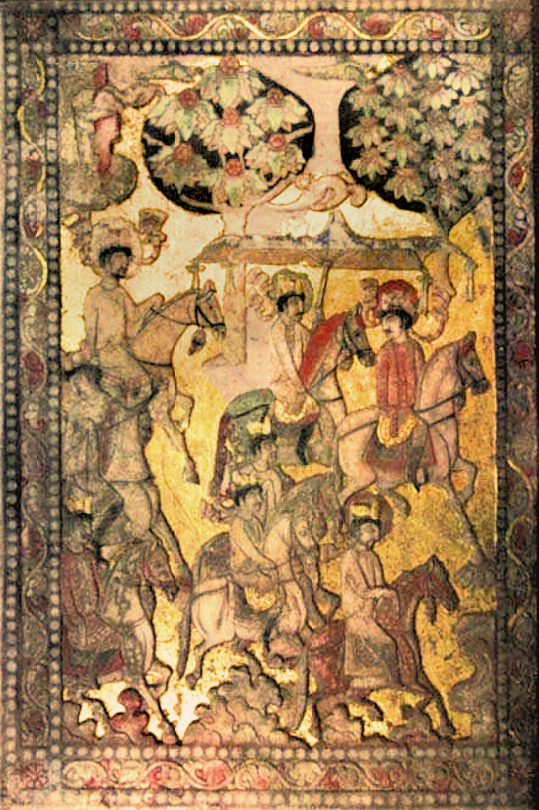
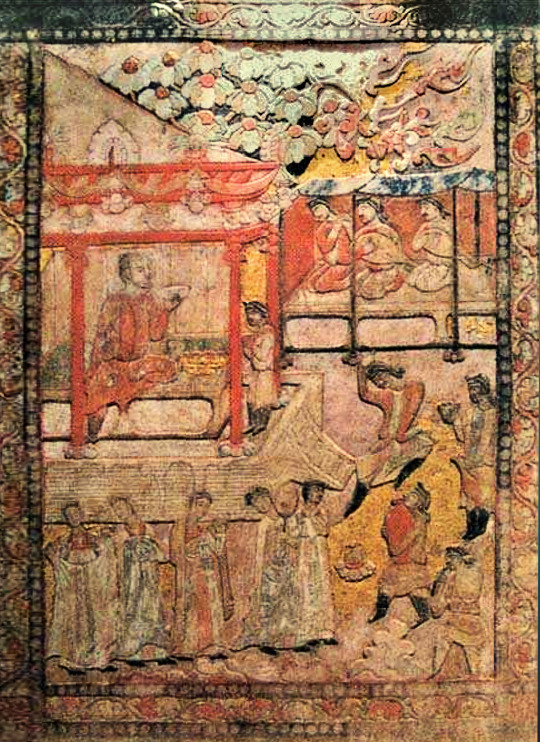


Tomb of An Bei 589 CE. Sogdian tomb.
I couldn't find the translation for the epitaph for this one.
"Differently from the other tombs quoted in this paper, Anbei’s tomb was not excavated by archaeologists, but found and looted by the robbers, therefore the archaeological context of this tomb, even the date of this accidental finding are lost. Until now, all we know is that this tomb robbery happened someday between 2006 and 2007. Several stone figurines, a funerary couch and Anbei’s epitaph stone were found in the tomb. Two stone figurines, parts of the base of the couch and the epitaph are now exhibited in the Tang West Market Museum in Xi’an (Fig.20), four panels belonging to the private owners, including two processing and two banqueting scenes, were published, too (Fig.21).
Although owning the typical Sogdian name An, which means his ancestors migrated into China from Bukhara, his homeland was described in a completely different name, the state of Anjuyeni, which was never recorded by any source before. An’s family moved to China during the Northern Wei dynasty, some of his family members once served in the Bureau of Tributaries. For the court, it’s also an usual way to adopt expatriate immigrants to work in the diplomatic system. Anbei’s father, An Zhishi, served as a middle-rank commanding officer among the honour guards of the court.
As a, likely, third generation immigrant, Anbei’s life depicted in the epitaph was very brief, too. Except for the usual eulogies commonly written in every epitaph, two main parts of his experience were emphasized: his mercantile ability and simple bureaucratic career. The one who wrote the text made a metaphor, assimilating Anbei with two famous ancient Chinese merchants, Baigui and Xiangao during the Eastern Zhou Period (approximately between 8th c. - 3rd c. BC); After that, Anbei’s only short official career as a very lower status clerk of the military headquarters of vassal leader Xuchang was recorded, probably happened in 575 AD when he was 20 years old. Soonafter the Northern Qi was replaced by Northern Zhou dynasty in 577 AD, Anbei returned home in Luoyang, the place where he died and was buried in 589 AD at the age of 34.
The motivation for me to list this robbed tomb here, together with the other tombs which have detailed background obtained through scientific archaeological excavation is, however, mainly not for its elaborate funerary couch, but because of his distinctive identity depicted in the epitaph. Prior to the discovery of Anbei’s tomb, the deceased of all five tombs which constituted the most important foundation of the studies of the foreign immigrants in early medieval China, namely the tombs of Lidan, Kangye, Anjia, Shijun and Yuhong, owned high-ranked official positions such as head of a prefecture or Sabao, which may result in a misconception that only aristocrats of the foreign immigrants could be buried with such elaborate funerary furniture. However, Anbei’s tomb provided an additional possibility about the status of the tomb occupant who used the stone funerary furniture. What is expressly shown in the epitaph, during his 34-year-long life, Anbei was just a very ordinary person, without any notable ancestry from homeland, neither held any high-ranked post, nor received anyone as a posthumous reward.
Except for the basic information above, there is also a remarkable narration during the introduction in the beginning of Anbei’s epitaph, which may reflect the collective mindset among most of the foreign immigrants in China and their efforts in social integration, ‘Although he is a foreigner, after a long life in China, there is no difference between him and the Chinese’.
-Yusheng Li, Study of tombs of Hu people in late 6th century northern China
201 notes
·
View notes